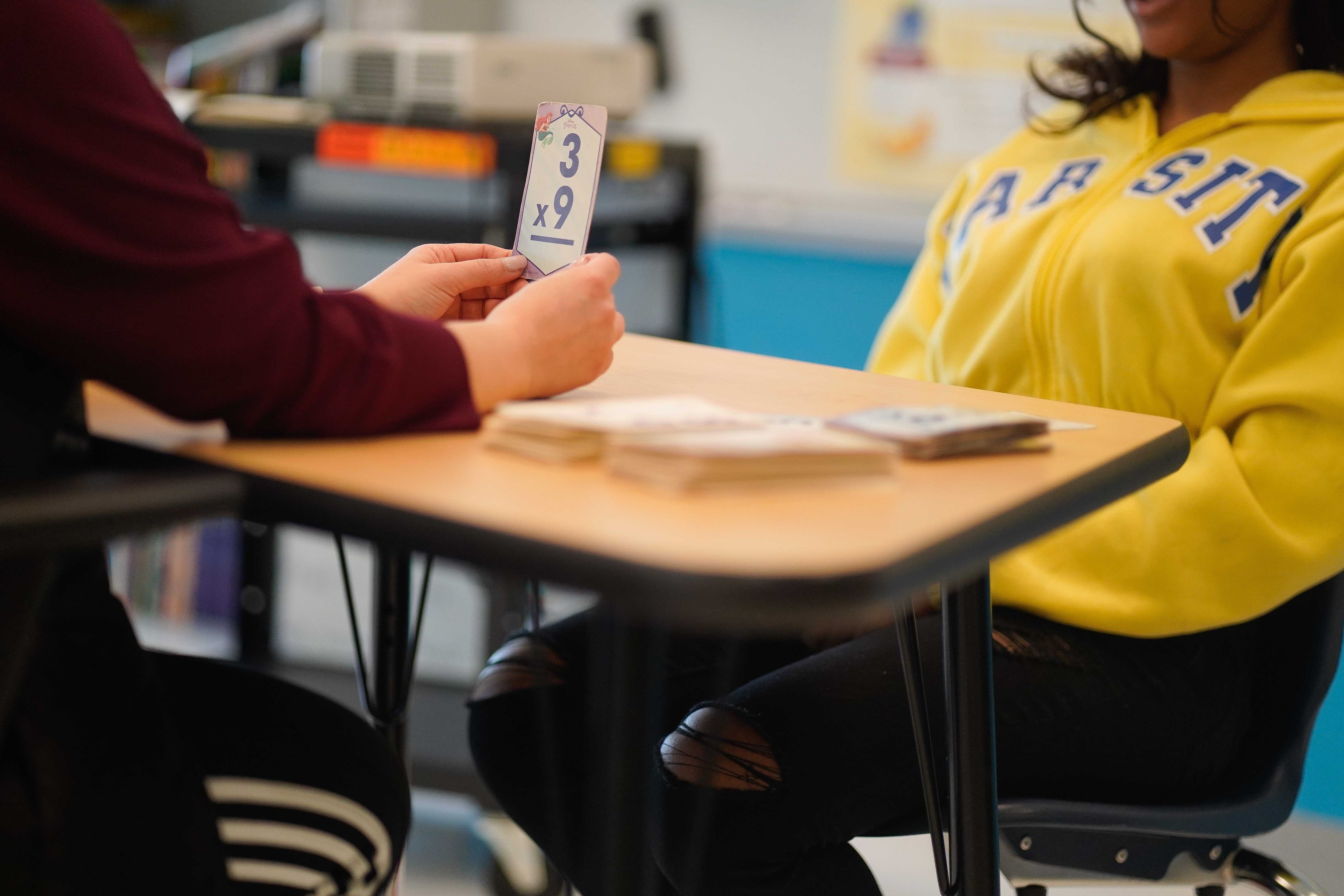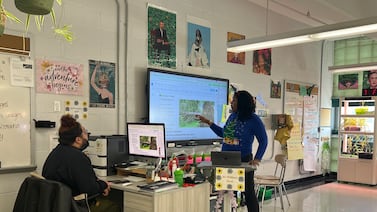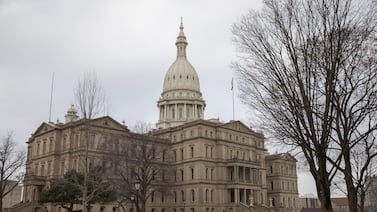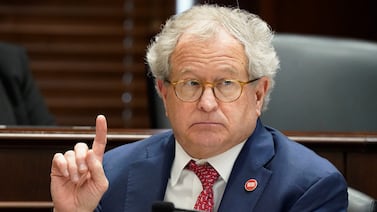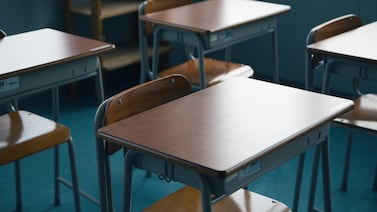Sign up for Chalkbeat Chicago’s free daily newsletter to keep up with the latest education news.
The Chicago Board of Education has approved a plan that maps out Chicago Public Schools’ priorities for the next five years and seeks to encourage more children to attend school within their neighborhoods.
The plan, revealed publicly for the first time on Monday and approved by the board Wednesday, does not include CPS policy changes. But it sets out a slew of priorities and goals, including reducing chronic absenteeism, increasing state reading and math scores, and reducing teacher vacancies.
It also seeks to beef up resources and funding for neighborhood schools, where enrollment has declined over the past decade, and blames current “competitive enrollment policies” — presumably for selective enrollment and other choice schools — for “pitting schools against each other” and perpetuating inequity in CPS.
Despite that implicit criticism, the plan doesn’t make changes to the city’s school choice system, which includes selective enrollment, magnet, and charter schools that children apply to, some of which require an admissions exam. That board said in December that it wanted to rethink school choice in this strategic plan, with a goal of moving “away from privatization and admissions/enrollment policies and approaches that further stratification and inequity in CPS and drive student enrollment away from neighborhood schools.”
That choice system is coveted by many families who want more freedom over where to send their children. But it has also been sharply criticized by families and Mayor Brandon Johnson for its high-stakes testing and admissions that can be stressful for kids and families.
In December, the board said any changes to school choice or other school policies would depend on public feedback. Asked this week before Wednesday’s vote why the plan didn’t change school choice policies, officials said they heard lots of public feedback from families who valued different school options. Instead, they wanted the final plan to squarely focus on sending more resources to neighborhood schools.
The plan did, however, set a specific goal to increase the percentage of children who choose to attend schools within their neighborhoods, instead of traveling further away to attend a school of choice.
How the new strategic plan plays out will be determined in large part by the new school board due to take over soon. Chicago voters will choose the city’s first elected school board members on Nov. 5. The new board, which will be sworn in in January, will have 21 members, with 10 of them elected. The board will be fully elected by 2027.
“For this plan to be successful, we will need everyone to stay engaged,” said Board President Jianan Shi, adding that the board will have more public events about the plan in the “coming weeks and months.”
Shi also called for the public to help the board advocate for more funding. The district is embroiled in financial challenges. It recently closed a half-billion-dollar budget deficit, but it faces additional costs, including for potential pension payments and a pending Chicago Teachers Union contract, without clarity on how it will pay for those costs.
CPS plan focuses on Black students, school culture
The plan was developed by engaging nearly 14,000 people, officials said. It sets specific priorities for different student groups. For example, one focus is improving achievement for Black students, who are disproportionately less likely to read and learn math on grade level compared to their peers and are disciplined at higher rates.
It also aims to improve the quality of education for students with disabilities and children in the early grades of pre-K through second grade, and also calls for students to learn more than one language by the time they graduate.
The district has started working on some of those goals, such as through the development of a Black Student Success Plan.
The plan also places a greater emphasis on how well students feel they are supported by their schools as another measure for how well children are doing in school.
The audience applauded the board’s unanimous vote Wednesday and then mostly cleared out before a few people publicly spoke about the plan.
Natasha Erskine, head of the parent advocacy group Raise Your Hand, said she liked that the plan focuses on “the historical harm that has been caused on communities, particularly Black communities, poor communities, and children who have special needs.”
She called for more details about how the district will hire more special education staff and how it will better support Local School Councils. Erskine also said she hoped for more public engagement over how the district will actually implement this plan.
Andrew Broy, president of the Illinois Network of Charter Schools, said the plan is a “modest step in the right direction, in the sense that [the board’s] December missive about public school choice was walked back a little bit.”
Charter schools were alarmed by the board’s December resolution that criticized school choice, and parents and staff from those schools expressed concerns at multiple board meetings over the past eight months.
Still, Broy said his organization remains concerned about the process behind the plan, saying that there wasn’t enough meaningful engagement with families or the charter community before the board adopted its December resolution critical of the choice system.
Even though CPS held several open forums for people to share feedback, Broy said there should have been more listening sessions or focus groups to have more meaningful conversations.
In a written statement, Adam Parrott-Sheffer, who is running for a school board seat to represent South Side District 10 and attended Wednesday’s meeting, said the plan focuses “on the right things.”
“The work is to ensure future boards and mayors keep their eyes on the prize and do the work to enact and monitor the plan so that it becomes real in every classroom,” he said in the statement.
Reema Amin is a reporter covering Chicago Public Schools. Contact Reema at ramin@chalkbeat.org.
Correction: A previous version of this story misspelled Adam Parrott-Sheffer’s name.

